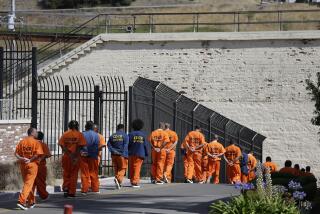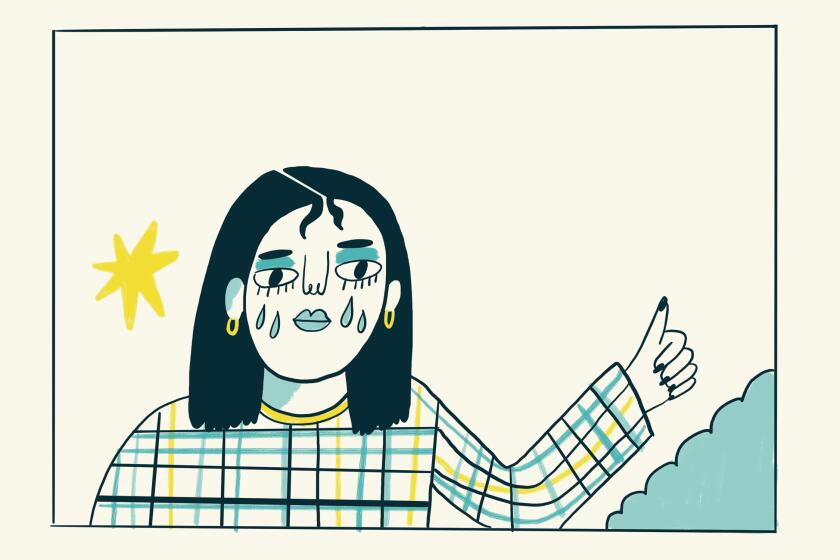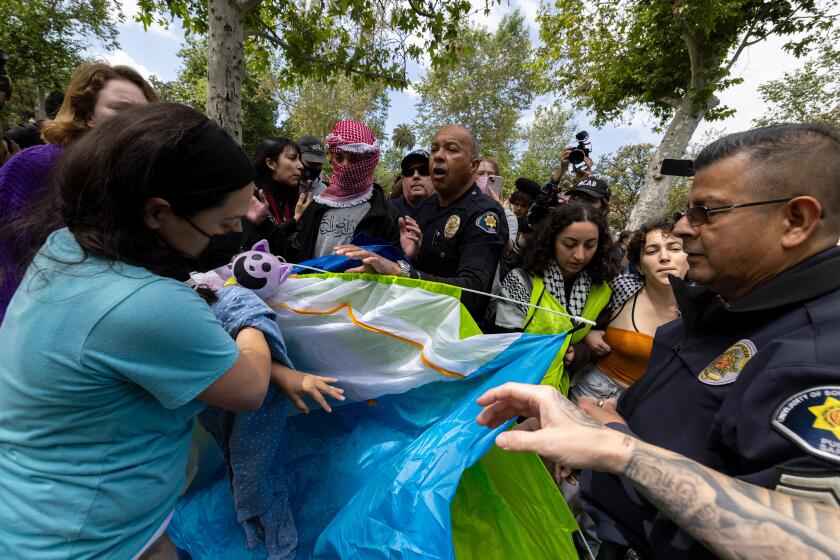Solitary — and anger — in California’s prisons
If the California Department of Corrections and Rehabilitation was as serious about reforming its use of indefinite solitary confinement as it says it is, nearly 30,000 inmates wouldn’t have started on a hunger strike last week, with many thousands still refusing meals.
In October 2011, during the third week of another hunger strike involving some 12,000 prisoners, the department agreed to review the policy that lands thousands of people in its Security Housing Units, or SHUs, for long-term isolation.
These units are bleak. In Pelican Bay State Prison’s SHU, which I have visited, most inmates live alone in a 7-by-11-foot cell without windows. They are allowed to exercise, alone, for an hour a day in a 16-by-25-foot cell with a plexiglass roof. They cannot make or receive phone calls or have contact visits with family or friends. They have no access to drug treatment programs and cannot attend religious services. The average inmate remains in isolation for 71/2 years.
Some SHU inmates have committed heinous acts in prison, but a prisoner doesn’t have to be violent to get put in the hole indefinitely. Until recently, all it took was evidence that the inmate was associated with one of a number of gangs, and the evidence had to satisfy only prison authorities; it was never reviewed by an external body or court.
The parameters for what constitutes gang activity can be arbitrary. In the thousands of pages of prisoners’ case files I have reviewed, “evidence” of gang affiliation has included possession of prisoner-rights literature or books like Sun Tzu’s “Art of War” or Machiavelli’s “The Prince.” It has included journal writings on African American history. Even use of the words tio and hermano — Spanish for “uncle” and “brother” — have been cited as evidence of gang affiliation.
A year ago when I checked the numbers, the majority of those serving indefinite SHU terms were not even considered to be gang members but rather “associates,” which required only that they had been involved, at least periodically, with other gang members or associates.
VIDEO: California’s prison hunger strike continues
About a year after the 2011 hunger strike, the corrections department began instituting reforms. The most noticeable change was that the minimum amount of time an inmate had to serve in the SHU was reduced from six years to four. They also began reviewing the cases of inmates currently in the SHU. More than 200 of the nearly 400 inmates whose cases were reviewed were approved for transfer to the general population.
Since this process began, I have received some jubilant letters from inmates who are hopeful their day will come. One 68-year-old man I corresponded with, Stanley Surray-Pete, is now relearning how to live among people for the first time in 39 years.
The reviews are an important step. But there is more to the story. When department officials cite the numbers of people being approved for release, they neglect to mention an important fact: SHU confinement has actually risen since the reforms were enacted.
According to official numbers I obtained from the corrections department, the population of the state’s SHUs has risen 15% over the last year, to a current total of 4,527 across the state.
It’s difficult to know the reason for the increase — the corrections department has not yet provided me with numbers that would answer that question. But one possibility might be that the new policy contains wording that vastly expands the number of people who can qualify for indefinite SHU terms.
A year ago, only seven gangs made the list of groups whose members and associates qualified for indefinite SHU terms. Now, some 1,500 gangs are on that list, although affiliation with one of the original seven listed is more likely to land an inmate in indefinite SHU detention than affiliation with a gang considered less dangerous.
According to a list given to me by the corrections department last year, groups that qualify for the new “security threat group” designation include street gangs like the Bloods and the Crips as well as political groups like the Black Panthers.
Prison officials say that, since the last hunger strike, they have moved toward a “behavior-based” approach to SHU incarceration. While previously association with a gang was enough to earn an indefinite SHU term, now an associate must commit one or two (depending on the ranking of the gang) serious rule violations to land there.
But a close look at the new policy reveals that the department has changed the definition of “serious” rule violations. In the past, these violations would have been the kinds of things you’d expect: selling drugs, attacking another inmate, attempting to escape. Under the new policy, a serious rule violation can be the possession of self-made drawings, the wrong books or anything that “depicts affiliation” with a security threat group — in other words, the kind of stuff that has always been used to lock people in the SHU.
This kind of trickery has angered a lot of prisoners, setting off protests much larger than those in 2011. Then, protesters focused explicitly on long-term solitary confinement. Now, the strikers are also calling for improved conditions across the board. At Corcoran, they want a pay raise from 13 cents to $1 an hour. High Desert prisoners are demanding reinstatement of meaningful vocational training. Salinas Valley inmates are calling for the return of educational classes for high-security inmates. Everyone is demanding more nutritious food.
With so many participating in the current strike, fatalities seem likely. Prison officials should immediately begin discussions with strike leaders to find ways to improve conditions.
Agreeing to curb the use of solitary confinement as anything but a last resort would be a good start.
Shane Bauer is an investigative journalist. He was held for 26 months (four of them in solitary confinement) in an Iranian prison after being arrested while hiking near the Iranian border with Iraq.
More to Read
A cure for the common opinion
Get thought-provoking perspectives with our weekly newsletter.
You may occasionally receive promotional content from the Los Angeles Times.






